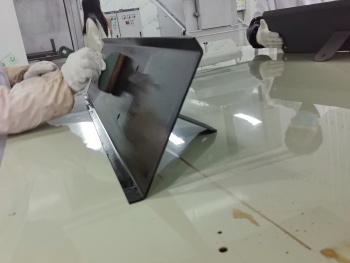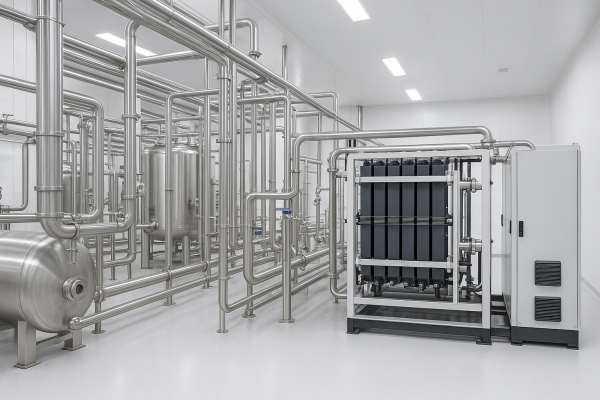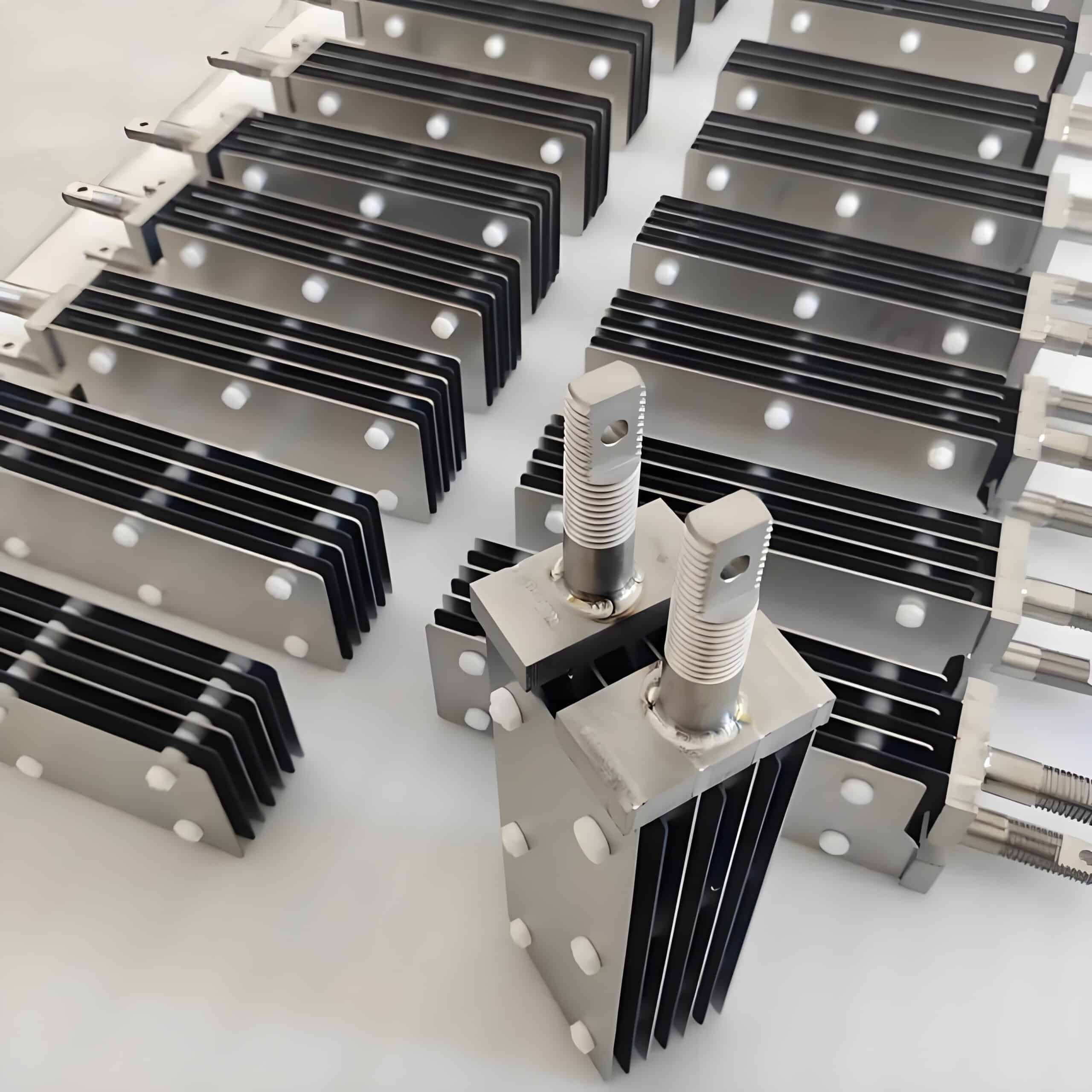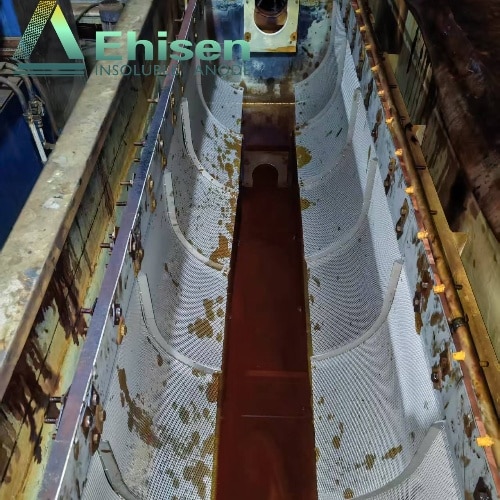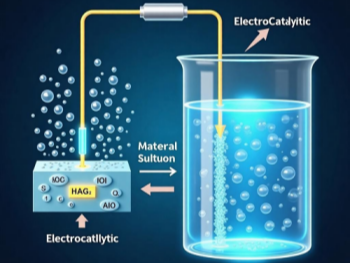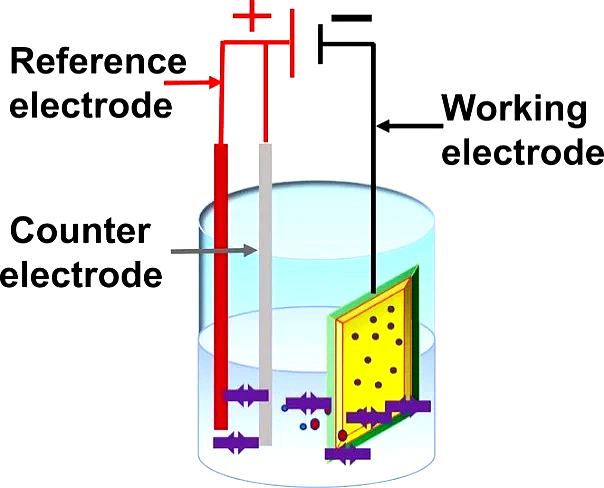Introduction: The Rising Importance of Titanium Anodes Amid the Global Water Crisis
According to the United Nations World Water Development Report 2023, approximately 2 billion people lack access to safe drinking water, and over 45% of wastewater treatment facilities fail to meet environmental standards. At the same time, new challenges such as industrial wastewater, microplastic pollution, and antibiotic resistance continue to emerge. Against this backdrop, electrochemical water treatment technology is gaining prominence due to its high efficiency, zero secondary pollution, and strong adaptability.
As the core component of electrochemical systems, titanium anodes play a decisive role in determining water treatment efficiency and cost. Their main function is to facilitate electrochemical reactions such as electrocatalytic oxidation, electrocoagulation, and electrodialysis, enabling the effective degradation of pollutants. Unlike traditional chemical treatment methods, electrochemical technology eliminates the need for chemical additives, prevents sludge formation, and avoids harmful byproducts, making it particularly suitable for treating high-salinity, toxic, and persistent organic pollutants in wastewater.
According to a MarketsandMarkets 2023 report, the global electrochemical water treatment market is projected to grow at a CAGR of 12.3%, reaching $8.6 billion by 2030. Titanium anodes, as a key consumable, account for 35%-40% of the market share.
This article provides an in-depth analysis of future trends in titanium anodes in the water treatment industry, focusing on material innovations, structural design advancements, smart control integration, and sustainable recycling practices. By combining global market data, the latest technological research, and real-world case studies, we aim to shed light on the evolution of titanium anodes and their role in shaping the future of water treatment.

1. High-Performance Coating Materials: From Precious Metal Dependence to Diversified Innovation
1.1 Limitations of Traditional Coating Materials
Commercial titanium anode coatings are predominantly ruthenium-iridium-based (RuO₂-IrO₂), but they face two major challenges:
-
High Cost:
- Iridium (Ir) is extremely scarce, with a global annual production of only 7-8 tons. Its price surged from $950/oz in 2018 to $1,650/oz in 2023 (Source: USGS 2023).
- In a typical electrochemical oxidation system, titanium anodes constitute 40%-60% of total equipment costs, with the precious metal coating alone accounting for over 70%.
-
Limited Lifespan:
- In highly oxidative environments (e.g., chloride-containing wastewater), traditional coatings suffer from lattice oxygen loss and active layer peeling, resulting in a lifespan of just 1-3 years.
- In an industrial textile wastewater treatment project, replacing anodes required a 72-hour system shutdown, leading to a 5% annual production loss (Source: Journal of Environmental Engineering, 2022).
Global Precious Metal Price Trends (2018-2023)
| Metal | 2018 Price ($/oz) | 2023 Price ($/oz) | Increase (%) | Main Applications |
|---|---|---|---|---|
| Iridium | 950 | 1,650 | 73% | Titanium anodes, aerospace alloys |
| Ruthenium | 260 | 480 | 85% | Titanium anodes, electronics |
| Platinum | 900 | 1,050 | 17% | Catalysts, jewelry |
(Source: USGS, London Platinum & Palladium Market)
1.2 Breakthroughs in New Coating Materials
(1) Rare-Earth Doping: Enhanced Catalytic Activity & Stability
Rare-earth elements (such as La, Ce, and Pr) improve coating conductivity and resistance to passivation through their unique 4f electron structure.
-
Case Study 1:
A research team at the Chinese Academy of Sciences developed a La-Ce co-doped TiO₂ coating, which reduced oxygen evolution overpotential from 320mV to 245mV and extended lifespan from 1,200 to 2,160 hours under 3A/dm² current density. This technology, applied in a petrochemical wastewater treatment plant, reduced per-ton treatment costs by 18% (Source: Applied Catalysis B: Environmental, 2022). -
Mechanism:
SEM analysis showed that rare-earth doping reduced crystal grain size from 1-2μm to 50-100nm, increasing surface area fivefold and significantly enhancing active site density.
(2) Non-Precious Metal Composite Coatings: Cost Reduction of Over 50%
Transition metal oxides (such as Co₃O₄ and MnO₂) combined with carbon-based materials (carbon nanotubes, graphene) leverage interface electron effects and synergistic catalysis for performance improvement.
-
Case Study 2:
A team at MIT developed a Co₃O₄@CNT composite coating, which improved antibiotic wastewater degradation efficiency from 68% to 92%, while reducing costs by 55% (Source: Nature Water, 2023). -
Market Forecast:
According to Grand View Research 2023, the market share of non-precious metal titanium anodes will increase from 12% in 2023 to 38% by 2030, driven primarily by high-purity water demand in pharmaceuticals and electronics.
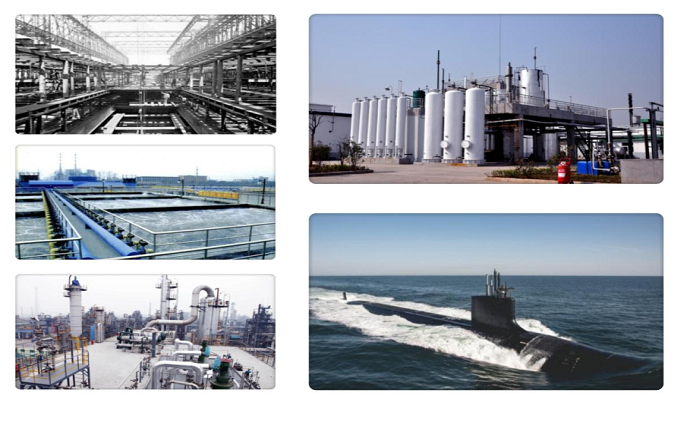
Performance Comparison of Different Coating Materials
| Coating Type | Oxygen Evolution Overpotential (mV) | Accelerated Lifespan (h) | Cost Index | Suitable Applications |
|---|---|---|---|---|
| RuO₂-IrO₂ | 320 | 1,200 | 100 | High-chloride wastewater |
| SnO₂-Sb₂O₅ | 410 | 800 | 35 | Low-concentration organics |
| La-Ce/TiO₂ | 245 | 2,160 | 60 | Toxic and persistent pollutants |
| Co₃O₄@CNT | 280 | 1,800 | 45 | Antibiotics and pharmaceutical wastewater |
(Cost index: RuO₂-IrO₂ benchmark = 100)
2. Structural Design Innovations: From 2D Flat Plates to 3D Customization
2.1 Efficiency Bottlenecks of Traditional Electrode Structures
Traditional flat electrodes suffer from uneven current distribution and poor mass transfer efficiency:
- Edge Effect: COMSOL simulations show that current density at the edges is three times higher than at the center, leading to localized overheating and accelerated coating failure.
- Mass Transfer Limitations: In static or low-flow conditions, pollutant diffusion rates are low, with only 60% of the effective reaction area utilized.
2.2 3D Porous Electrode Structures: Performance Breakthroughs
(1) Foam Titanium Anodes: 10x Higher Surface Area
Through powder metallurgy or 3D printing, foam titanium anodes achieve a porosity of 80% and a surface area of 5,000-8,000 m²/m³ (compared to 500 m²/m³ for flat electrodes).
- Case Study 3:
In an industrial pesticide wastewater treatment project, using foam titanium anodes led to:- COD removal rate increase from 75% to 92%
- Energy consumption reduction from 4.2 kWh/m³ to 3.0 kWh/m³
- 28% reduction in operating costs (Source: Environmental Engineering Report, 2022).
(2) Fiber Bundle Electrodes: Adaptability to Dynamic Flow
Titanium fiber bundle electrodes, woven from 50-100μm diameter titanium fibers, offer a high specific surface area (3,000 m²/m³) and excellent abrasion resistance.
-
Experimental Data:
- In oily wastewater treatment, fiber bundle electrodes achieved a 94% removal efficiency for emulsified oil, 41% higher than flat electrodes (Source: Water Research, 2021).
-
Application Scenarios:
- Suitable for offshore platform oily wastewater and metalworking emulsified fluids, which contain high levels of suspended solids.
Performance Comparison of Different Titanium Anode Structures
| Structure Type | Specific Surface Area (m²/m³) | Anti-Fouling Capability | Suitable Applications | Typical Client Cases |
|---|---|---|---|---|
| Flat Plate | 500 | Low | Low-turbidity, static water | Municipal wastewater treatment plants |
| Mesh | 1,500 | Medium | Moderate flow rates | Food processing wastewater |
| Foam | 8,000 | High | High-concentration organic wastewater | Industrial chemical parks |
| Fiber Bundle | 3,000 | Extremely High | Suspended solid-rich wastewater | Offshore oil platforms |
3. Smart Control: From Experience-Driven to Data-Driven Optimization
3.1 IoT-Enabled Real-Time Monitoring
Integrating pH sensors, ORP (oxidation-reduction potential) sensors, and temperature sensors into titanium anode systems enables real-time data collection, which is transmitted via LoRa/NB-IoT to cloud platforms. This allows for:
- Coating Health Assessment:
- By monitoring current efficiency (CE) in real time, the system can predict coating failure with an accuracy of 95%.
- Fault Prediction & Prevention:
- In a smart water treatment project, the system detected electrode anomalies 72 hours in advance, preventing an unplanned shutdown that would have cost $1.2 million (Source: IoT Industry White Paper, 2023).
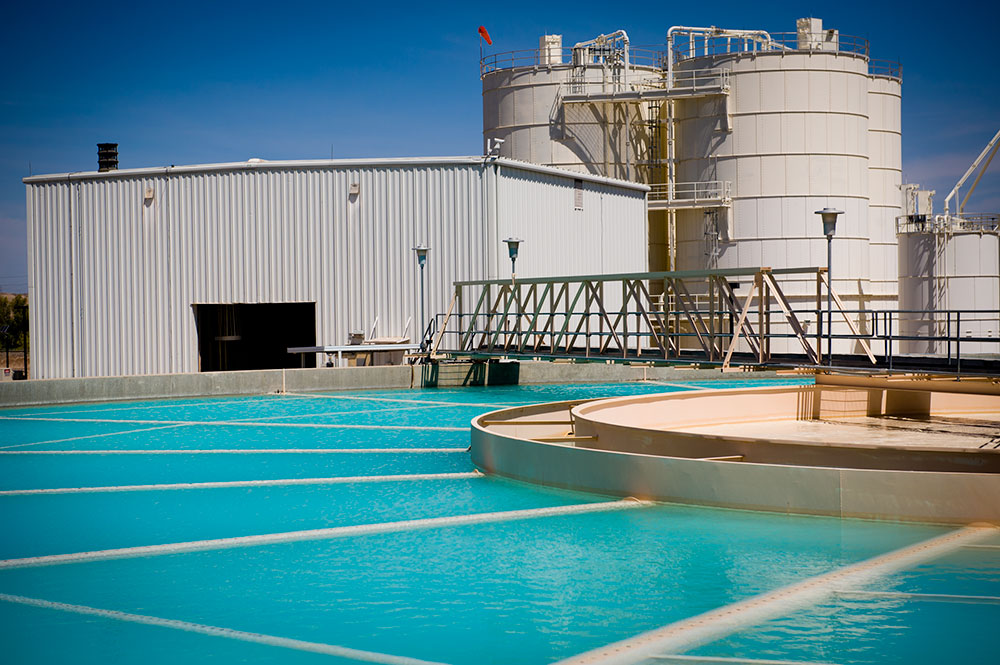
3.2 AI-Powered Process Optimization
Using LSTM (Long Short-Term Memory) neural networks, AI models dynamically adjust operational parameters such as current density and pulse frequency:
- Case Study 4:
In an electroplating wastewater treatment plant, AI-driven process control:- Stabilized nickel ion removal at 99.5% (compared to a previous fluctuation range of 98%-99%).
- Reduced per-cubic-meter energy consumption from 2.8 kWh to 2.1 kWh.
- Saved $850,000 annually in electricity costs (Source: Environmental Science & Technology, 2023).
4. Sustainable Recycling: From Linear Consumption to Full Lifecycle Management
As environmental regulations become stricter and raw material costs continue to rise, the water treatment industry is moving toward a circular economy to reduce waste and improve resource efficiency. Titanium anodes, which are critical consumables in electrochemical water treatment, have historically followed a linear consumption model—where used anodes are discarded after reaching the end of their lifespan. However, advancements in coating regeneration technology and low-carbon manufacturing processes are reshaping the industry, offering a more sustainable and cost-effective approach.
4.1 Coating Regeneration Technology: Extending the Lifespan of Titanium Anodes
A major limitation of traditional titanium anodes is that once their catalytic coatings wear out, they lose efficiency and must be replaced, resulting in high operating costs and material waste. However, through plasma spraying and electrochemical activation, used anodes can now be regenerated, significantly extending their lifespan.

How the Regeneration Process Works
- Stripping of Worn Coating:
- The old, degraded catalytic layer is carefully removed using mechanical or chemical methods, ensuring that the titanium substrate remains intact.
- Recovery of Precious Metals:
- Any residual iridium, ruthenium, or platinum is extracted and reused, reducing the dependency on newly mined precious metals.
- Reapplication of High-Performance Coating:
- Using plasma spraying or electrodeposition, a fresh catalytic coating is applied, restoring the anode’s functionality.
- Electrochemical Activation:
- A final treatment optimizes the coating’s electrochemical properties, ensuring that it performs nearly as well as a brand-new anode.
Key Benefits of Titanium Anode Regeneration
-
Performance Recovery:
- Regenerated anodes retain up to 85% of the performance of new anodes while costing only 30% of a new anode.
- In many applications, regenerated anodes have a comparable operational lifespan to new anodes, making them a viable and sustainable alternative.
-
Economic Savings:
- A large-scale wastewater treatment facility that consumes 1,000 anodes per year can save up to $2 million annually by implementing a regeneration program.
- Businesses can reallocate savings toward other process improvements, further optimizing efficiency.
-
Environmental Impact Reduction:
- Iridium resource consumption is reduced by 75%, significantly lowering the demand for this scarce and expensive precious metal.
- Solid waste production is cut by 60%, as fewer used anodes are discarded.
- By extending the lifespan of titanium anodes, energy-intensive mining and refining processes for new materials are reduced, leading to a lower overall carbon footprint.
[Table 3] Lifecycle Cost Comparison: Traditional vs. Circular Economy Model
| Stage | Traditional Cost ($1000s) | Circular Economy Cost ($1000s) | Cost Reduction (%) |
|---|---|---|---|
| Raw Materials | 1,200 | 1,000 (Recycled) | 16.7% |
| Production | 800 | 700 | 12.5% |
| Operation & Maintenance | 2,000 | 1,500 (Smart Maintenance) | 25% |
| Disposal | 500 | 200 (Regeneration) | 60% |
| Total | 4,500 | 3,400 | 24.4% |
By integrating coating regeneration into their routine maintenance cycles, businesses can transition from a wasteful linear model to a sustainable, cost-efficient circular model—ensuring long-term profitability while meeting stringent environmental regulations.
4.2 Low-Carbon Manufacturing Processes: Reducing CO₂ Emissions in Titanium Production
While titanium is a highly durable and corrosion-resistant material, its traditional manufacturing process is highly energy-intensive and carbon-heavy. The standard Kroll process, which has been used for titanium production for decades, relies on carbon-based reduction techniques that release large amounts of CO₂. This has made titanium production one of the most polluting processes in the specialty metals industry.
To address this issue, the industry is shifting toward green hydrogen reduction, a revolutionary approach that dramatically reduces carbon emissions while maintaining the high purity of titanium materials.
How Green Hydrogen Reduction Works
Instead of using carbon-based reductants (such as coke or coal), this process employs hydrogen as the reducing agent to extract titanium from its ore. The reaction produces water (H₂O) instead of CO₂, making it a clean and environmentally friendly alternative.
Benefits of Low-Carbon Titanium Production
-
Drastic CO₂ Emission Reduction:
- The conventional Kroll process emits up to 8 tons of CO₂ per ton of titanium produced.
- Green hydrogen reduction cuts emissions to 0.5 tons per ton of titanium, a 94% reduction.
- This makes titanium anode production much more sustainable, aligning with global carbon neutrality goals.
-
Regulatory Compliance & Market Competitiveness:
- The EU has included green hydrogen reduction in the Sustainable Industry Act’s priority list, ensuring that companies adopting this process gain regulatory incentives and financial support.
- As carbon taxation and environmental penalties increase, companies using low-carbon titanium materials will have a competitive edge in global markets.
-
Energy Efficiency & Cost Savings:
- While green hydrogen production is currently more expensive than conventional methods, advancements in renewable energy (solar, wind) and electrolyzer technology are rapidly driving costs down.
- By adopting hydrogen-based titanium manufacturing, companies can future-proof their supply chains against rising carbon prices and fossil fuel volatility.

The Path Forward: Closing the Loop on Titanium Anode Sustainability
As sustainability becomes a core priority for industrial operations, companies that embrace circular economy models and low-carbon technologies will be best positioned for long-term success.
-
Short-Term Impact (2025-2030):
- Widespread adoption of coating regeneration can extend anode lifespans, cut costs, and reduce metal waste.
- Manufacturers integrating green hydrogen reduction into titanium production will significantly lower their carbon footprint, meeting new environmental policies.
-
Long-Term Vision (2030 & Beyond):
- With continued R&D in hydrogen-based metallurgy, smart coatings, and advanced recycling, titanium anode technology will evolve toward a completely circular and carbon-neutral process.
- Companies investing in these technologies will gain preferential access to green financing and sustainability-focused supply chains, ensuring long-term profitability and compliance.
By closing the resource loop, reducing emissions, and increasing material efficiency, titanium anodes are set to become a benchmark for sustainable innovation in the water treatment industry.
5. Future Outlook: Three Key Titanium Anode Applications by 2030
As technological advancements continue to reshape the water treatment industry, titanium anodes are expected to play an increasingly pivotal role in three critical applications: decentralized water treatment, heavy metal recovery, and offshore wastewater management. By 2030, these innovations will drive cost efficiency, sustainability, and resilience in industries ranging from municipal water supply to mining and offshore oil operations.
5.1 Decentralized Water Treatment Systems: Sustainable & Cost-Effective Solutions for Remote Areas
The Challenge
Access to clean drinking water remains a global issue, especially in rural areas, disaster-stricken zones, and off-grid locations. Traditional reverse osmosis (RO) systems, while effective, are expensive to install and maintain, require significant energy input, and produce brine waste that must be managed.
The Titanium Anode Solution
By combining solar power with electrochemical water treatment modules, containerized titanium anode-based units offer a self-sustaining and scalable solution for providing safe drinking water in areas lacking centralized infrastructure. These systems can:
- Treat 5-50 m³ of water per day, depending on system size and local water quality.
- Eliminate contaminants such as pathogens, heavy metals, organic pollutants, and pharmaceutical residues using electrocatalytic oxidation and electrocoagulation.
- Operate off-grid, powered by solar panels, reducing reliance on expensive energy sources.
- Avoid the high maintenance costs associated with membrane-based filtration (e.g., reverse osmosis).
Economic & Environmental Benefits
- 40% lower operational costs than conventional RO systems due to lower energy consumption and minimal chemical usage.
- No brine waste generation, unlike RO, which typically produces 30-50% waste brine that requires disposal.
- Easier deployment and scalability, allowing for rapid emergency response in disaster relief scenarios.
Real-World Implementation
Several water-scarce regions, including parts of Sub-Saharan Africa, South Asia, and the Middle East, have already begun pilot projects using electrochemical water purification systems. By 2030, these systems are expected to replace traditional diesel-powered filtration units, offering a more sustainable and cost-effective alternative.

5.2 Heavy Metal Recovery in Closed-Loop Systems: A Game-Changer for Industrial Wastewater Management
The Challenge
Industries such as electronics manufacturing, metal plating, and mining generate vast amounts of wastewater contaminated with valuable heavy metals like copper (Cu), nickel (Ni), and gold (Au). These metals, if left untreated, not only pose serious environmental hazards but also represent a loss of valuable resources. Traditional chemical precipitation methods for metal recovery are:
- Inefficient, with recovery rates often below 50%.
- Environmentally harmful, producing toxic sludge that requires costly disposal.
- Energy-intensive, increasing operational expenses.
The Titanium Anode Solution
Using selective electrodeposition technology, titanium anode systems can electrochemically recover high-purity metals from wastewater streams, enabling a closed-loop recycling process.
- Recovery Efficiency:
- Achieves 90%+ extraction rates for metals like copper, nickel, gold, and palladium.
- Purity Improvement:
- The recovered metals have a higher purity level (up to 99.9%), making them directly reusable in manufacturing processes.
- Operational Cost Savings:
- Reduces the need for expensive virgin raw materials, lowering production costs for industries reliant on these metals.
- Environmental Impact:
- Eliminates chemical sludge generation, improving regulatory compliance and reducing hazardous waste disposal costs.
Real-World Implementation
- Japan’s DOWA Group has successfully implemented a pilot-scale facility that recovers $23 million worth of valuable metals annually from electronic manufacturing wastewater.
- Large-scale adoption of this technology is expected in regions with strict environmental regulations, including the EU, Japan, and North America.
- By 2030, closed-loop heavy metal recovery is anticipated to become an industry standard, transforming wastewater treatment from a cost center into a profit-generating process.
5.3 Offshore Wastewater Treatment: Enabling Zero Liquid Discharge (ZLD) on Oil Platforms
The Challenge

Offshore oil and gas platforms generate significant volumes of wastewater, including:
- Produced water (water extracted along with oil and gas).
- Oily wastewater from drilling and processing operations.
- High-salinity effluents that require specialized treatment.
Current treatment methods rely on chemical separation and filtration, which:
- Struggle to handle high chloride concentrations found in seawater and produced water.
- Require frequent maintenance and replacement due to corrosion and fouling.
- Often result in partial discharge, failing to meet zero liquid discharge (ZLD) goals.
The Titanium Anode Solution
New-generation Ta/Ir (tantalum-iridium) gradient coatings for titanium anodes offer superior chloride corrosion resistance, making them ideal for offshore wastewater treatment applications.
- Key Advantages:
- Withstands extreme chloride concentrations in seawater-based environments.
- Maintains high electrocatalytic efficiency for breaking down oil residues, organic contaminants, and heavy metals.
- Supports energy-efficient ZLD systems, enabling offshore platforms to completely eliminate wastewater discharge.
Industry Adoption & Future Trends
- Norway’s Equinor plans to deploy ZLD-enabled electrochemical treatment systems using Ta/Ir-coated titanium anodes on its North Sea platforms by 2025.
- Regulatory pressure from the International Maritime Organization (IMO) and national governments is pushing offshore operators to adopt more sustainable wastewater treatment solutions.
- By 2030, electrochemical offshore wastewater treatment is expected to become the industry standard, ensuring that oil and gas operations comply with global environmental regulations.

The Road Ahead: Titanium Anodes as the Foundation of Next-Generation Water Treatment
By 2030, titanium anodes will play a transformational role in addressing some of the most pressing global water treatment challenges. The integration of advanced materials, smart control systems, and circular economy principles will enable these applications to become:
✅ More cost-effective – Lower operational and maintenance expenses.
✅ More sustainable – Reduced waste generation and resource consumption.
✅ More efficient – Higher treatment capacity and pollutant removal efficiency.
For businesses and policymakers, investing in next-generation titanium anode technologies will not only reduce costs and regulatory risks but also unlock new opportunities in the rapidly growing water treatment market.
By embracing these innovations, industries will move closer to a future where clean water is accessible, resources are efficiently utilized, and industrial wastewater treatment aligns with global sustainability goals.

